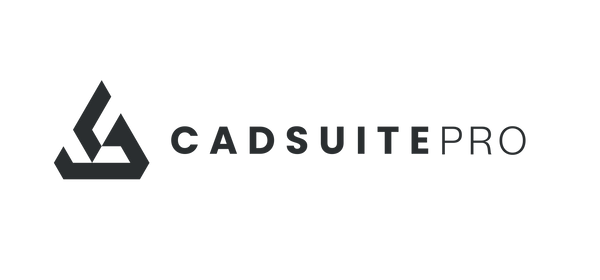
Rivian’s Playbook: 4 Ways Owners Can De-Risk Preconstruction
Share
Rivian, the company known for its high-performance electric trucks and SUVs, is growing its footprint across the U.S. at a pace few owners can match. The company is scaling its manufacturing plants and service centers. It's building showrooms and experience spaces. Then there's the Rivian charging network, which continues to expand as more of its vehicles hit the road.
With such ambitious growth goals, Rivian can't leave preconstruction to chance. That's why the team turned to Autodesk to bring its teams and processes together in a single platform.
In a recent webinar, I had the opportunity to speak with Mac Little, Senior Technical Program Manager at Rivian, to unpack how the company streamlines its construction workflows using Autodesk Construction Cloud (ACC).
Whether you're an owner, contractor, or tech leader, Rivian's journey offers practical lessons on how to reduce risk, improve collaboration, and scale efficiently.
Check out highlights from our conversation below, and if you'd like to access the full webinar, you can watch it on demand here.
Rivian, the company known for its high-performance electric trucks and SUVs, is growing its footprint across the U.S. at a pace few owners can match. The company is scaling its manufacturing plants and service centers. It's building showrooms and experience spaces. Then there's the Rivian charging network, which continues to expand as more of its vehicles hit the road.
With such ambitious growth goals, Rivian can't leave preconstruction to chance. That's why the team turned to Autodesk to bring its teams and processes together in a single platform.
In a recent webinar, I had the opportunity to speak with Mac Little, Senior Technical Program Manager at Rivian, to unpack how the company streamlines its construction workflows using Autodesk Construction Cloud (ACC).
Whether you're an owner, contractor, or tech leader, Rivian's journey offers practical lessons on how to reduce risk, improve collaboration, and scale efficiently.
Check out highlights from our conversation below, and if you'd like to access the full webinar, you can watch it on demand here.
Takeaway 1: Owners must lead preconstruction to reduce risk
Rivian emphasized that owners—not just contractors—must take an active role in preconstruction to maintain control over cost, schedule, and quality.
"As the owner, we carry the ultimate responsibility for program costs, schedule, and quality. Leaving it entirely to contractors can lead to siloed decisions and misalignment with our long-term strategy," explained Mac.
The company is incredibly hands-on with its external partners, particularly during the preconstruction stage, because it understands that identifying risks early is more cost-effective and prevents downstream surprises.
"The goal was to reduce risk of surprises downstream. Adopting ACC shifted the risk recognition from construction to preconstruction, where it's way cheaper and faster to catch issues."
Takeaway 2: Centralized tools to drive efficiency and transparency
For owners like Rivian, real-time visibility into bids, coverage, costs, and risk signals is non-negotiable. That's why centralizing data, workflows, and partners in one platform was a top priority when selecting a construction platform. That requirement for a single source of truth was what ultimately led Rivian to adopt Autodesk.
"The number one priority for us was central visibility. It allowed us to clarify and see risk signals, like underscoped packages, trade coverage, pricing anomalies, etc.," shared Mac
When it came to working with contractors, Rivian moved away from fragmented systems like spreadsheets, emails, disconnected bid tools and adopted BuildingConnected Pro to centralize bid management and vendor qualification.
"Disconnected systems created delays and blind spots. BuildingConnected gave us centralized visibility into who's bidding, what's covered, and where gaps exist."
According to Mac, this shift allowed Rivian's lean team to manage hundreds of projects with greater speed and accuracy, while reducing manual effort.
"We needed a true systemized approach. BuildingConnected helped us eliminate scope gaps and reactive coverage issues," he added.
Takeaway 3: Collaboration must be internal and external
Rivian works with numerous team members—many of whom are operating outside of the company. As you can imagine, getting everyone on the same page can be challenging given the number of functions involved.
The company solves this by bringing every stakeholder—internal and external—into a single platform: ACC. At the time of the webinar, Rivian had 9,500 ACC users, the bulk of whom are external.
Having everyone in ACC meant that information is centralized, changes are visible, and handoffs are clearer. As such, teams can work together in real time without losing context.
"Everyone's working at different times and on different pieces. We need to make sure that we're sharing information internally and externally, while collaborating as seamlessly as possible," said Mac.
He continued, "We've used Autodesk to create a central data and project management environment, then we've looped in all of the other groups internally and externally to collaborate in real-time."
It's also worth noting that Rivian's collaborative approach extends beyond preconstruction—it connects the entire lifecycle from design through construction to handover and operations:
"Not only do we have our general contractors in ACC, but we also have architects, subcontractors, and other vendors. We work with anyone and everyone who has to get a building done in the same ecosystem from the start through the end."
Mac added, "That was always the goal: get everyone in the system so they all have access to what they need at any given moment during the project lifecycle. All this information we're creating from day one continues through the lifecycle of us owning the building. Our operations teams take over these projects at the end of the day, and they're tracking them using Autodesk tools."
Takeaway 4: Standardization enables scale
In addition to centralizing data and teams in one platform, Mac also credited standardization as a key enabler of scale. Rivian built repeatable processes and templates to manage bids, qualify vendors, and track performance across a growing portfolio.
"You need to have very standardized systems and workflows in a central location. That's how we're able to scale."
To that end, ACC features like custom bid forms and checklists have enabled Rivian to run a rinse-and-repeat bidding process.
"Building up the custom bid forms was huge for us because we need to do things at a scale that are very repeatable," said Mac.
Beyond bid forms, Rivian has also systematized vendor qualification and preferred content, allowing teams to move faster with more confidence. According to Mac, "We've built a preferred content list and qualification tracking that lets us run faster and smarter with fewer people."
Rivian's standardized processes also apply to other stages of the project, including construction and handover.
"When you're moving from preconstruction bidding to design and construction, there are clear handoffs and requirements of what we need internally and externally. It's about ensuring we've collected and tracked everything before we hand it off. We started using Autodesk's form functions heavily because that allowed us to track closeout punch list processes inside the same system."
Rivian's blueprint for owners
Rivian's journey proves that owners can and should lead the charge in preconstruction. By centralizing tools, improving collaboration, and standardizing workflows, Rivian has built a scalable, risk-aware construction program that supports its rapid growth.
Want to learn more? Check out the full webinar and explore how Autodesk Construction Cloud can help your team simplify preconstruction.
